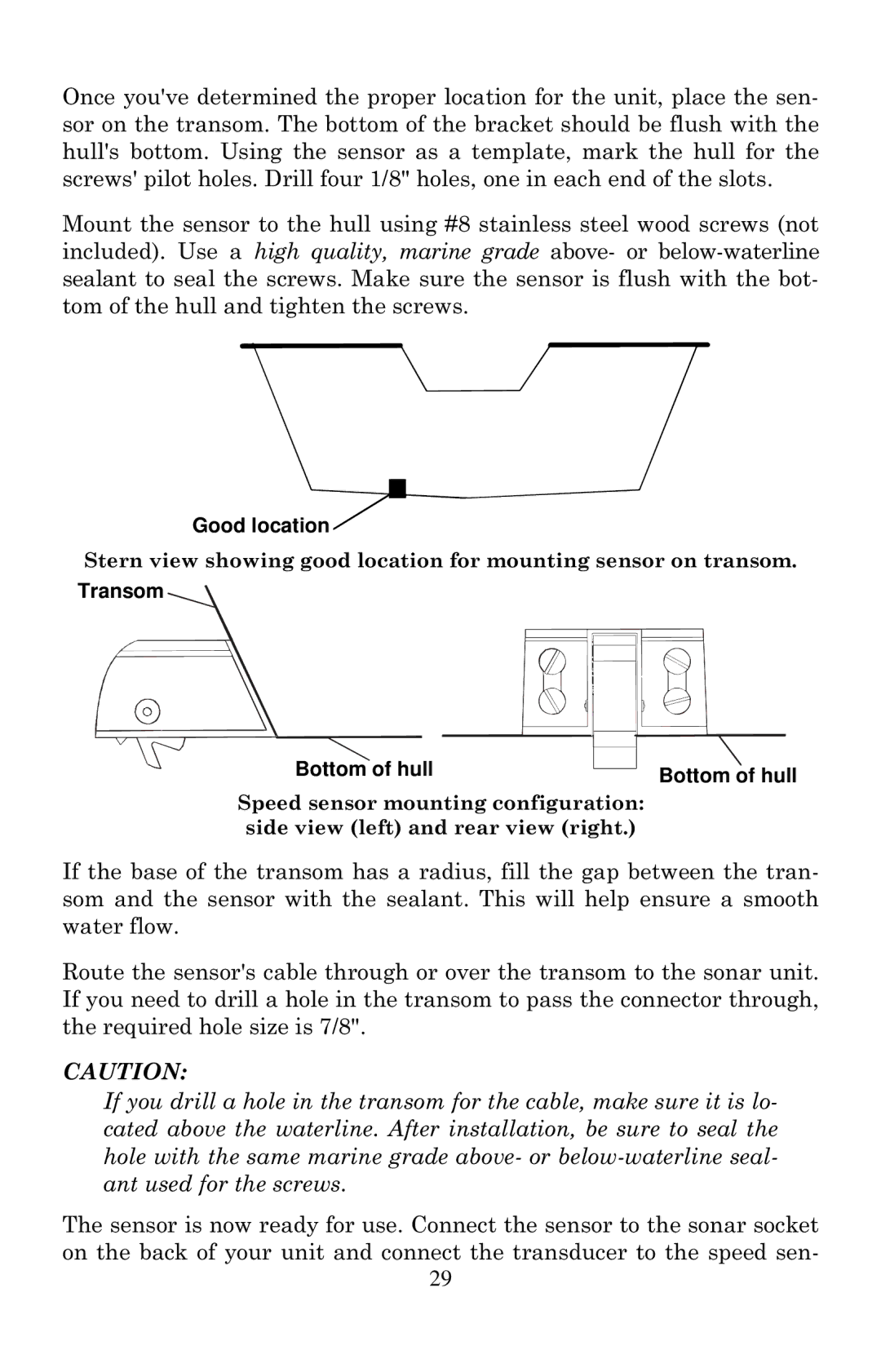
Once you've determined the proper location for the unit, place the sen- sor on the transom. The bottom of the bracket should be flush with the hull's bottom. Using the sensor as a template, mark the hull for the screws' pilot holes. Drill four 1/8" holes, one in each end of the slots.
Mount the sensor to the hull using #8 stainless steel wood screws (not included). Use a high quality, marine grade above- or

 Good
Good  location
location
Stern view showing good location for mounting sensor on transom.
Transom
Bottom of hull | Bottom of hull |
|
Speed sensor mounting configuration: side view (left) and rear view (right.)
If the base of the transom has a radius, fill the gap between the tran- som and the sensor with the sealant. This will help ensure a smooth water flow.
Route the sensor's cable through or over the transom to the sonar unit. If you need to drill a hole in the transom to pass the connector through, the required hole size is 7/8".
CAUTION:
If you drill a hole in the transom for the cable, make sure it is lo- cated above the waterline. After installation, be sure to seal the hole with the same marine grade above- or
The sensor is now ready for use. Connect the sensor to the sonar socket on the back of your unit and connect the transducer to the speed sen- 29
